Housing Market Forecast for the Rest of 2022 [INFOGRAPHIC]
![Housing Market Forecast for the Rest of 2022 [INFOGRAPHIC],KCM Crew](https://img.chime.me/image/fs/chimeblog/20220805/16/w600_original_164d93cc-46c4-4e8e-bb19-0a227e23600d-png.webp)
Some Highlights The housing market is shifting away from the intensity of the past two years. Here’s what experts project for the remainder of 2022. Home prices are forecast to rise more moderately than last year. Mortgage rates will respond to inflation, and home sales will be more in line with pre-pandemic years. Let’s connect so you can make your best move this year. Content previously posted on Keeping Current Matters
Read MoreThink Home Prices Are Going To Fall? Think Again

Over the last two years, the rate of home prices appreciated at a dramatic pace. While that led to incredible equity gains for homeowners, it’s also caused some buyers to wonder if home prices will fall. It’s important to know the housing market isn’t a bubble about to burst, and home price growth is supported by strong market fundamentals.To understand why price declines are unlikely, it’s important to explore what caused home prices to rise so much recently, and where experts say home prices are headed. Here’s what you need to know.Home Prices Rose Significantly in Recent YearsThe graph below uses the latest data from CoreLogic to illustrate the rise in home prices over the past year and a half. The gray bars represent the dramatic increase in the rate of home price appreciation in 2021. The blue bars show home prices are still rising in 2022, but not as quickly:You might be asking: why did home prices climb so much last year? It’s because there were more buyers than there were homes for sale. That imbalance put upward pressure on home prices because demand was extremely high, and supply was record low.Where Experts Say Prices Will Go from HereWhile housing inventory is increasing and buyer demand is softening today, there’s still a shortage of homes available for sale. That’s why the market is seeing ongoing price appreciation. Mark Fleming, Chief Economist at First American, explains it like this:“. . .we’re still well below normal levels of inventory and that’s why even with the pullback in demand, we still see house prices appreciating. While there is more inventory, it’s still not enough.”As a result, experts are projecting a more moderate rate of home price appreciation this year, which means home prices will continue rising, but at a slower pace. That doesn’t mean prices are going to fall. As Selma Hepp, Deputy Chief Economist at CoreLogic, says:“The current home price growth rate is unsustainable, and higher mortgage rates coupled with more inventory will lead to slower home price growth but unlikely declines in home prices.”In other words, even with higher mortgage rates, moderating buyer demand, and more homes for sale, experts say home price appreciation will slow, but prices won’t decline.If you’re planning to buy a home, that means you shouldn’t wait for home prices to drop to make your purchase. Instead, buying today means you can get ahead of future price increases, and benefit from the rise in prices in the form of home equity.Bottom LineHome prices skyrocketed in recent years because there was more demand than supply. As the market shifts, experts aren’t forecasting a drop in prices, just a slowdown in the rate of price growth. To understand what’s happening with home prices in our area, let’s connect today.Content previously posted on Keeping Current Matters
Read MoreTwo Reasons Why Today’s Housing Market Isn’t a Bubble

You may be reading headlines and hearing talk about a potential housing bubble or a crash, but it’s important to understand that the data and expert opinions tell a different story. A recent survey from Pulsenomics asked over one hundred housing market experts and real estate economists if they believe the housing market is in a bubble. The results indicate most experts don’t think that’s the case (see graph below): As the graph shows, a strong majority (60%) said the real estate market is not currently in a bubble. In the same survey, experts give the following reasons why this isn’t like 2008: The recent growth in home prices is because of demographics and low inventory Credit risks are low because underwriting and lending standards are sound If you’re concerned a crash may be coming, here’s a deep dive into those two key factors that should help ease your concerns. 1. Low Housing Inventory Is Causing Home Prices To Rise The supply of homes available for sale needed to sustain a normal real estate market is approximately six months. Anything more than that is an overabundance and will causes prices to depreciate. Anything less than that is a shortage and will lead to continued price appreciation. As the graph below shows, there were too many homes for sale from 2007 to 2010 (many of which were short sales and foreclosures), and that caused prices to tumble. Today, there’s still a shortage of inventory, which is causing ongoing home price appreciation (see graph below): Inventory is nothing like the last time. Prices are rising because there’s a healthy demand for homeownership at the same time there’s a limited supply of homes for sale. Odeta Kushi, Deputy Chief Economist at First American, explains: “The fundamentals driving house price growth in the U.S. remain intact. . . . The demand for homes continues to exceed the supply of homes for sale, which is keeping house price growth high.” 2. Mortgage Lending Standards Today Are Nothing Like the Last Time During the housing bubble, it was much easier to get a mortgage than it is today. Here’s a graph showing the mortgage volume issued to purchasers with a credit score less than 620 during the housing boom, and the subsequent volume in the years after: This graph helps show one element of why mortgage standards are nothing like they were the last time. Purchasers who acquired a mortgage over the last decade are much more qualified than they were in the years leading up to the crash. Realtor.com notes: “. . . Lenders are giving mortgages only to the most qualified borrowers. These buyers are less likely to wind up in foreclosure.” Bottom Line A majority of experts agree we’re not in a housing bubble. That’s because home price growth is backed by strong housing market fundamentals and lending standards are much tighter today. If you have questions, let’s connect to discuss why today’s housing market is nothing like 2008.
Read MoreGive Your Curb Appeal a Boost Before You Sell [INFOGRAPHIC]
![Give Your Curb Appeal a Boost Before You Sell [INFOGRAPHIC],KCM Crew](https://img.chime.me/image/fs/chimeblog/20220429/16/w600_original_cfb67145-5360-4126-9e61-12f161ad2417-png.webp)
Some HighlightsIf you’re thinking about selling your house this season, focusing on a few quick and easy updates outside can help your home look its best.78% of real estate agents polled say poor landscaping affects property values. As a seller, that means your yard could impact your bottom line.When getting your house ready to sell, let’s connect to discuss what you should do to make sure your house shows well and catches the eyes of more potential buyers.Content previously posted on Keeping Current Matters
Read More3 Charts That Show This Isn’t a Housing Bubble

With home prices continuing to deliver double-digit increases, some are concerned we’re in a housing bubble like the one in 2006. However, a closer look at the market data indicates this is nothing like 2006 for three major reasons. 1. The housing market isn’t driven by risky mortgage loans. Back in 2006, nearly everyone could qualify for a loan. The Mortgage Credit Availability Index (MCAI) from the Mortgage Bankers’ Association is an indicator of the availability of mortgage money. The higher the index, the easier it is to obtain a mortgage. The MCAI more than doubled from 2004 (378) to 2006 (869). Today, the index stands at 130. As an example of the difference between today and 2006, let’s look at the volume of mortgages that originated when a buyer had less than a 620 credit score.Dr. Frank Nothaft, Chief Economist for CoreLogic, reiterates this point: “There are marked differences in today’s run up in prices compared to 2005, which was a bubble fueled by risky loans and lenient underwriting. Today, loans with high-risk features are absent and mortgage underwriting is prudent.” 2. Homeowners aren’t using their homes as ATMs this time. During the housing bubble, as prices skyrocketed, people were refinancing their homes and pulling out large sums of cash. As prices began to fall, that caused many to spiral into a negative equity situation (where their mortgage was higher than the value of the house). Today, homeowners are letting their equity build. Tappable equity is the amount available for homeowners to access before hitting a maximum 80% combined loan-to-value ratio (thus still leaving them with at least 20% equity). In 2006, that number was $4.6 billion. Today, that number stands at over $8 billion. Yet, the percentage of cash-out refinances (where the homeowner takes out at least 5% more than their original mortgage amount) is half of what it was in 2006. 3. This time, it’s simply a matter of supply and demand. FOMO (the Fear Of Missing Out) dominated the housing market leading up to the 2006 housing bubble and drove up buyer demand. Back then, housing supply more than kept up as many homeowners put their houses on the market, as evidenced by the over seven months’ supply of existing housing inventory available for sale in 2006. Today, that number is barely two months. Builders also overbuilt during the bubble but pulled back significantly over the next decade. Sam Khater, VP and Chief Economist, Economic & Housing Research at Freddie Mac, explains that pullback is the major factor in the lack of available inventory today: “The main driver of the housing shortfall has been the long-term decline in the construction of single-family homes.” Here’s a chart that quantifies Khater’s remarks:Today, there are simply not enough homes to keep up with current demand. Bottom Line This market is nothing like the run-up to 2006. Bill McBride, the author of the prestigious Calculated Risk blog, predicted the last housing bubble and crash. This is what he has to say about today’s housing market: “It’s not clear at all to me that things are going to slow down significantly in the near future. In 2005, I had a strong sense that the hot market would turn and that, when it turned, things would get very ugly. Today, I don’t have that sense at all, because all of the fundamentals are there. Demand will be high for a while because Millennials need houses. Prices will keep rising for a while because inventory is so low.” Content previously posted on Keeping Current Matters
Read MoreWhat You Should Do Before Interest Rates Rise
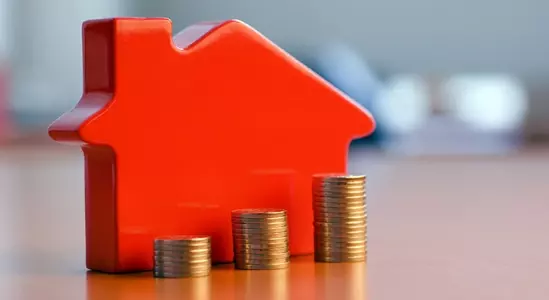
In today’s real estate market, mortgage interest rates are near record lows. If you’ve been in your current home for several years and haven’t refinanced lately, there’s a good chance you have a mortgage with an interest rate higher than today’s average. Here are some options you should consider if you want to take advantage of today’s current low rates before they rise. Sell and Move Up (or Downsize) Many of today’s homeowners are rethinking what they need in a home and redefining what their dream home means. For some, continued remote work is bringing about the need for additional space. For others, moving to a lower cost-of-living area or downsizing may be great options. If you’re considering either of these, there may not be a better time to move. Here’s why. The chart below shows average mortgage rates by decade compared to where they are today:Today’s rates are below 3%, but experts forecast rates to rise over the next few years. If the interest rate on your current mortgage is higher than today’s average, take advantage of this opportunity by making a move and securing a lower rate. Lower rates mean you may be able to get more house for your money and still have a lower monthly mortgage payment than you might expect. Waiting, however, might mean you miss out on this historic opportunity. Below is a chart showing how your monthly payment will change if you buy a home as mortgage rates increase: Breaking It All Down: Using the chart above, let’s look at the breakdown of a $300,000 mortgage: When mortgage rates rise, so does the monthly payment you can secure. Even the smallest increase in rates can make a difference in your monthly mortgage payment. As interest rates rise, you’ll need to look at a lower-priced home to try and keep the same target monthly payment, meaning you may end up with less home for your money. No matter what, whether you’re looking to make a move up or downsize to a home that better suits your needs, now is the time. Even a small change in interest rates can have a big impact on your purchasing power. Refinance If making a move right now still doesn’t feel right for you, consider refinancing. With the current low mortgage rates, refinancing is a great option if you’re looking to lower your monthly payments and stay in your current home. Bottom Line Take advantage of today’s low rates before they begin to rise. Whether you’re thinking about moving up, downsizing, or refinancing, let’s connect today to discuss which option is best for you. Content previously posted on Keeping Current Matters
Read MoreExperts Agree: Options Are Improving for Buyers [INFOGRAPHIC]
![Experts Agree: Options Are Improving for Buyers [INFOGRAPHIC],KCM Crew](https://img.chime.me/image/fs/chimeblog/20210721/16/w600_original_d562e9ae-6163-48a7-abbe-1561fbe6318d-png.webp)
Some Highlights Buyers hoping for more homes to choose from may be in luck as housing inventory begins to rise. Many experts agree – new sellers listing their homes is great news for buyers and the overall market. Although the supply increases are modest, more homes means more options for buyers. A rise in inventory may also help slow the price gains we’ve seen recently and could be a sign of good things to come. If you’re searching for a home, rising inventory is welcome news. Let’s connect today to discuss new listings in our area. Content previously posted on Keeping Current Matters
Read MoreHousing Supply Is Rising. What Does That Mean for You?
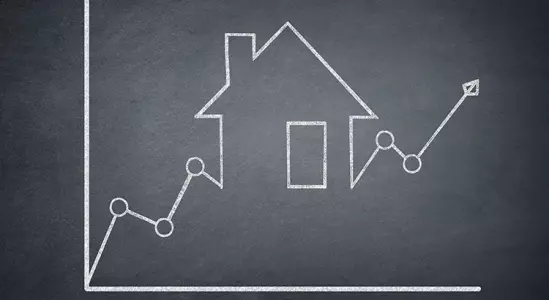
An important factor in today’s market is the number of homes for sale. While inventory levels continue to sit near historic lows, there are indications we may have hit the lowest point we’ll see. Odeta Kushi, Deputy Chief Economist at First American, recently said of our supply challenges: “It looks like inventory may have hit a bottom (we’ve seen this in the higher frequency data as well). Unsold inventory in May was at 2.5 months supply, up from 2.4.” To put it into perspective, the graph below shows levels of inventory rising since the beginning of the year:We’re still not close to a balanced market, which would be a 6 months’ supply of homes for sale. However, we are seeing a slow but steady increase in homes coming up for sale. And that leaves many buyers and sellers wondering the same thing: what does that mean for me? Buyers: More Options Are Arriving, so It’s Time To Act If you’re a buyer, more inventory coming to market is a welcome sight. More supply means more options and less competition, which could mean fewer bidding wars. According to the latest Monthly Housing Market Trends Report, supply levels are continuing to increase, which is different from the typical summer market: “In June, newly listed homes grew by 5.5% on a year-over-year basis, and by 10.9% on a month-over-month basis. Typically, fewer newly listed homes appear on the market in the month of June compared to May. This year, growth in new listings is continuing later into the summer season, a welcome sign for a tight housing market.” If you’re having trouble finding your next home, this news should give you the hope and motivation to keep your buying process moving forward. Experts project mortgage rates will begin increasing, which will make purchasing a home less affordable as time passes. You can still capitalize on today’s low interest rates, so stick with your search as more homes come to market. Sellers: Our Supply Challenges Aren’t Over Yet, so Now Is the Time To Sell If you’ve been putting off selling your house, you shouldn’t wait much longer. The year’s month-over-month gains in homes for sale have helped buyers, but we’re still very much in a sellers’ market. As the graph below shows, even with the number of homes for sale rising, we’re still well below the supply levels we’ve seen historically:Of course, more homes are coming to market now, and more are expected in the coming months. Selling your house this summer gives you the chance to get ahead of the competition and maximize your sales potential before more homes are put up for sale in your neighborhood. Bottom Line More homes for sale means more options for buyers and more competition for sellers. Whether you’re looking to buy or sell, let’s connect today to discuss your options and why it’s still a good time to make your move. Content previously posted on Keeping Current Matters
Read MoreWhy This Isn’t Your Typical Summer Housing Market

In real estate, it’s normal to see ebbs and flows in the market. Typically, the summer months are slower-paced than the traditionally busy spring. But this isn’t a typical summer. As the economy rebounds and life is returning to normal, the real estate market is expected to have an unusually strong summer season. Here’s how this summer is stacking up against the norm and what it means for you. Inventory is increasing. According to the latest Existing Home Sales Report from the National Association of Realtors (NAR), inventory levels have been rising since February of this year. Looking at the graph below, there’s a clear upward trend, as shown in the green bars. Currently, there’s roughly a 2.5 months’ supply of homes for sale. And while inventory is trending up as more houses are coming to the market, it’s still much lower than several of the previous summers, as the orange bars indicate.If you’re looking to buy, some relief is on the way in the form of more homes coming to the market. Just remember, we still have less inventory than the norm, so be patient in your search. If you’re thinking of selling, now is the time. Work with your agent to list your house before it has more competition on the market. Time on the market is still shorter than normal. Unlike the typical summer trend, time on the market is moving at the fastest speed we’ve seen since NAR started collecting this survey-based information in 2011. The most recent Realtors Confidence Index shows that the average home is on the market for just 17 days, as shown in green in the graph below. This means houses are selling at a much faster pace than a typical summer, which the orange bars represent.If you’re looking to buy, this means you need to be prepared to move fast. Brace for a quick pace and rely on your agent to stay in the know on the available homes in your area. If you’re thinking of selling, data shows your house will likely sell quickly. If you’re worried about where you’ll go once your house sells, consider a newly built home as a good way to move up. Price appreciation is still rising. The last big factor making this an unusually strong market this summer is home price appreciation. According to the State House Price Index from the Federal Housing Finance Agency (FHFA), we’re currently experiencing double-digit house price appreciation and have an average of 12.6% appreciation across the country. The graph below uses data from NAR to show a more granular view of how prices have changed month-to-month over the past few years. The green bars show the current price appreciation we’re experiencing today. Our current levels are well above what we’ve seen in recent summers, shown by the orange bars.If you’re looking to buy, competition and bidding wars are driving prices up. Getting pre-approved can show the seller you’re serious and help you know what you can afford. Once you do, work with your agent to make a strong offer that stands out. If you’re thinking of selling, seize this opportunity to use your additional equity from this price appreciation to power your next move. Bottom Line This isn’t a typical summer. Whether you’re buying or selling, let’s connect to talk about how you can capitalize on today’s market conditions to sell your house or find your dream home. Content previously posted on Keeping Current Matters
Read More4 Major Incentives To Sell This Summer

While the housing market forecast for the second half of the year remains positive, there may not be a better time to sell than right now. Here are four things to consider if you’re trying to decide if now’s the right time to make a move.1. Your House Will Likely Sell Quickly According to the most recent Realtors Confidence Index released by the National Association of Realtors (NAR), homes continue to sell quickly. The report notes homes are selling in an average of just 17 days.Average days on market is a strong indicator of buyer competition, and homes selling quickly is a great sign for sellers. It’s one of several factors that indicate buyers are motivated to do what it takes to purchase the home of their dreams.2. Buyers Are Willing To Compete for Your House In addition to selling fast, homes are receiving multiple offers. NAR reports sellers are seeing an average of 5 offers, and these offers are competitive ones. Shawn Telford, Chief Appraiser at CoreLogic, said in a recent interview:“The frequency of buyers being willing to pay more than the market data supports is increasing.” This confirms buyers are ready and willing to enter bidding wars for your home. Receiving several offers on your house means you can select the one that makes the most sense for your situation and financial well-being.3. When Supply Is Low, Your House Is in the SpotlightOne of the most significant challenges for motivated buyers is the current inventory of homes for sale, which while improving, remains at near-record lows. As NAR details:“Total housing inventory at the end of May amounted to 1.23 million units, up 7.0% from April’s inventory and down 20.6% from one year ago (1.55 million). Unsold inventory sits at a 2.5-month supply at the present sales pace, marginally up from April’s 2.4-month supply but down from 4.6-months in May 2020.”There are signs, however, that more homes are coming to market. Odeta Kushi, Deputy Chief Economist at First American, notes:“It looks like existing inventory is starting to inch up, which is good news for a housing market parched for more supply.”If you’re looking to take advantage of buyer demand and get the most attention for your house, selling now before more listings come to the market might be your best option.4. If You’re Thinking of Moving Up, Now May Be the TimeOver the past 12 months, homeowners have gained a significant amount of wealth through growing equity. In that same period, homeowners have also spent a considerable amount of time in their homes, and many have decided their house doesn’t meet their needs.If you’re not happy with your current home, you can leverage that equity to power your move now. Your equity, plus current low mortgage rates, can help you maximize your purchasing power.But these near-historic low rates won’t last forever. Experts forecast interest rates will increase in the coming months. Nadia Evangelou, Senior Economist and Director of Forecasting at NAR, says:“Nevertheless, as the economic outlook for the United States looks brighter for the rest of the year, mortgage rates are expected to rise in the following months.”As interest rates rise, even modestly, it could influence buyer demand and your purchasing power. If you’ve been waiting for the best time to sell to fuel your move up, you likely won’t find more favorable conditions than those we’re seeing today. Bottom LineWith supply challenges, low mortgage rates, and extremely motivated buyers, sellers are well-positioned to take advantage of current market conditions right now. If you’re thinking about selling, let’s connect today to discuss why it makes sense to list your home sooner rather than later.Content previously posted on Keeping Current Matters
Read MoreYour Home Equity Can Take You Places
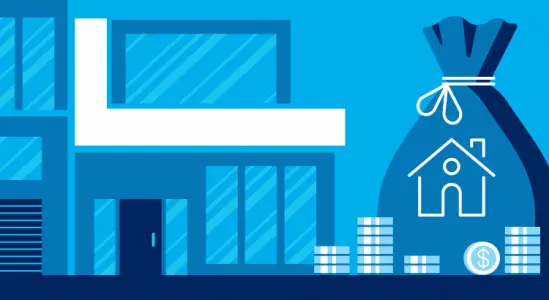
Some Highlights The amount of wealth Americans have stored in their homes has increased astronomically. On average, homeowners gained $33,400 in equity over the last 12 months, and the average equity on mortgaged homes is now $216,000. When it’s time to sell, your home equity can help accomplish your goals. Let’s connect to discuss how you can take advantage of today’s sellers’ market to get the most out of your home sale. Content previously posted on Keeping Current Matters
Read More
Categories
Recent Posts
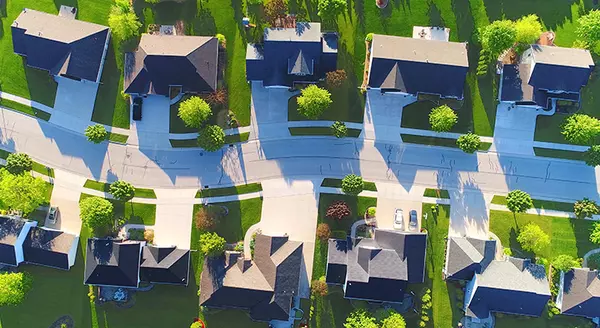
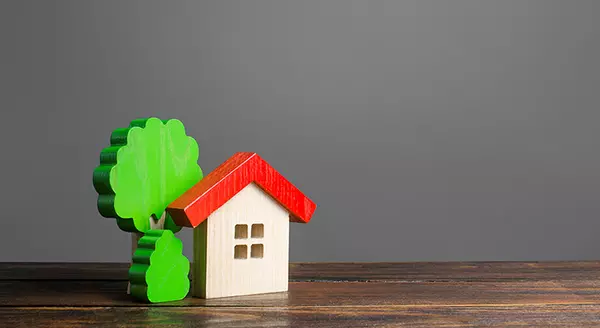


![Home Prices Are Back on the Rise [INFOGRAPHIC]](https://img.chime.me/image/fs/chimeblog/20230812/16/w600_original_73952f5b-41e6-4afc-9d6d-86bcc980935a-png.webp)


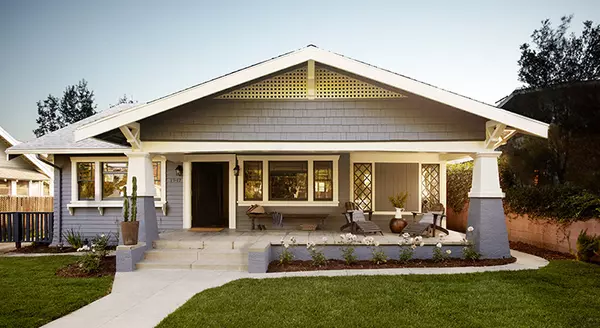

![Housing Market Forecast for the Rest of 2023 [INFOGRAPHIC]](https://img.chime.me/image/fs/chimeblog/20230805/16/w600_original_174b3938-d7aa-4cc9-9234-937cad152c49-png.webp)
